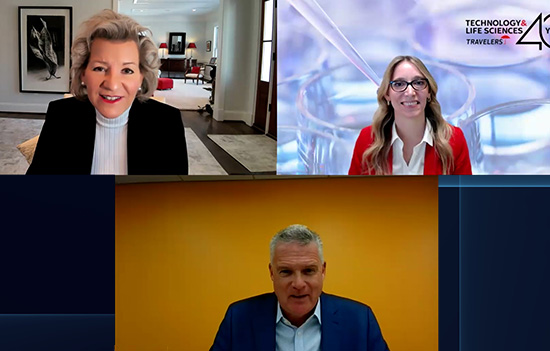AI in Action: The Future of Risk Management Through Predict & Prevent®

AI in Action: The Future of Risk Management Through Predict & Prevent®
October 23, 2024
Wednesday 1:00 p.m.-2:00 p.m. ET
In an era marked by rapid technological advancements, Peter Miller, CPCU, President and CEO of The Institutes, joined us to discuss his thoughts on the transformative potential of the Predict & Prevent® model in risk management and insurance. He explored how this proactive approach could leverage artificial intelligence and other cutting-edge technologies to not only enhance safety for policyholders, but also minimize disruptions to their daily lives and businesses and reduce associated costs for insurance companies.
Watch webinar replay
(DESCRIPTION)
Text: Wednesdays with Woodward (registered trademark) Webinar Series. Travelers Institute (registered trademark), Travelers. 15 Years.
(SPEECH)
JOAN WOODWARD: Hi there, everyone. Good afternoon. And thank you so much for joining us. I'm Joan Woodward. I'm honored to lead the Travelers Institute, which is the public policy and educational arm of Travelers. Welcome to Wednesdays with Woodward, a webinar series where we convene leading experts for important conversation about today's biggest challenges. We're really glad you're here.
So before we get started, as always, I'd like to share our disclaimer about today's program.
(DESCRIPTION)
Text: About Travelers Institute (registered trademark) Webinars. The Wednesdays with Woodward (registered trademark) educational webinar series is presented by the Travelers Institute, the public policy division of Travelers. This program is offered for informational and educational purposes only. You should consult with your financial, legal, insurance or other advisors about any practices suggested by this program. Please note that this session is being recorded and may be used as Travelers deems appropriate.
(SPEECH)
I would also like to thank our webinar partners today, TrustedChoice.com, MetroHartford Alliance, the National Association of Professional Insurance Agents, the Master’s in FinTech Program at UConn, and the Connecticut Business & Industry Association, as well as, of course, our esteemed guest for today and his organization, The Institutes.
(DESCRIPTION)
Partner logos. Text: AI in Action: The Future of Risk Management Through Predict & Prevent (registered trademark).
(SPEECH)
Now on to our program. Today, I'm thrilled to have a risk management and insurance thought leader and CEO and President of The Institutes. Peter Miller is joining us.
(DESCRIPTION)
Photos of Speakers. Text: Joan Woodward, Executive Vice President, Public Policy; President, Travelers Institute, Travelers. Peter Miller, MBA, CPCU, President and Chief Executive Officer, The Institutes.
(SPEECH)
Pete's been our guest before on our webinar series to discuss The Institutes’ professional development options, like the CPCU designation.
This and other Institute programs help RMI professionals stay ahead of evolving trends, risk management and insurance. So today, however, he joins us to discuss his work on the Predict & Prevent model in risk management and in insurance. We're going to hear from Pete about how this proactive approach could leverage artificial intelligence and other cutting-edge technologies to enhance safety for policyholders and reduce claims.
Over the past two years, Peter has been exploring this approach with various risk management and insurance experts, insurtechs, regulators and others. Many of these experts have been guests on Pete's Predict & Prevent podcast series. We're going to put a link in the chat right now for his podcast. Additionally, Pete has completed extensive Ph.D. work focused on generative AI. So he knows firsthand the value and the capabilities of this technology.
This really promises to be a fascinating discussion. So with that, Pete, I'm thrilled to turn the floor over to you. And then everyone who's interested in having a question, please put those in the Q&A. But we're going to let Pete really talk about his model that he's developed. Pete, the floor is yours.
(DESCRIPTION)
Next slide: The Institutes (registered trademark), Educate, Elevate, Connect. Predict & Prevent (registered trademark). Exploring new ways to respond to the biggest risk challenges facing society, by leveraging technology and resilience principles to better predict and prevent losses before they occur.
(SPEECH)
PETE MILLER: Thank you, Joan. And thanks to the Travelers Institute for having me and to all of you for joining this webinar. As Joan mentioned, I have a background in IT and in AI. So you can imagine, for me, I think this is a fascinating time to be in this industry.
So the approach that we're going to outline today really kind of focuses on exploring new ways that we can protect our policyholders. And it kind of tries to respond to the biggest risk challenges that we face by leveraging new technologies and resilience principles to help prevent losses before they occur.
(DESCRIPTION)
Next slide: Predict & Prevent: The Evolution of Risk Management and Insurance.
(SPEECH)
So for the next few minutes, I'm just going to walk through some slides, where we'll take a look at the evolution of risk management and how we see that working. So on this slide, you see basically two streams, right? Detect and repair. And that's kind of the traditional insurance model that we've all worked in for some time and has been around for a number of years.
A loss occurs, a claim is filed. We pay out claims. And then in that case, a home is rebuilt.
(DESCRIPTION)
Illustrations from left to right with arrows in between: a house on fire, a pen and paper, a bundle of cash, a repaired house. Text: Detect & Repair, Loss Occurs, Claim is Filed, Claim is paid out, House is rebuilt.
(SPEECH)
Predict & Prevent would go, well, hang on. There's another way to approach this. What if we could predict and prevent a loss before it ever occurs because the best loss is the one that never happens?
So in that case, let's just say that we have-- there's an IoT sensor in the house. Let's say it's a device that can monitor and detect electrical current fluctuations. Well, you could put the sensor in your house. You could then notify the homeowner that, hey, guess what? There's a spike in the electricity going into your house, might be something you want to look at, and it could prevent a fire.
No loss is filed. Policyholder’s happy, didn't have a fire at their house. And it enabled technologies to bring a new series of services to our policyholders and our clients. So it shifts it from the traditional insurance, which was after the loss occurs, if you will, to pre-loss.
(DESCRIPTION)
Illustrations: Home with sensor, cell phone with text bubbles, fire inside a no symbol, paper and pen in a no symbol. Text: Predict & Prevent, Home sensor detects problem, Owner is notified, Fire is prevented, No loss filed.
(SPEECH)
So moving on, why would that-- why is that important? So the idea is that we can predict and prevent bad things and stop them from happening. Well,
(DESCRIPTION)
Next slide, text: Predict & Prevent: Rising Losses and Economic Viability.
(SPEECH)
This slide is a little bit busy, but it shows you that there's rising losses and some economic impacts of that.
(DESCRIPTION)
Map of the United States. Text: U.S. 2024 Billion-Dollar Weather and Climate Disasters. This map denotes the approximate location for each of the 20 separate billion-dollar weather and climate disasters that impacted the United States through August 2024. Graphic source: National Centers for Environmental Information.
(SPEECH)
2024, $20 billion-- $21 billion or more losses between January and August. Helene alone, according to Moody's, is around $34 billion.
(DESCRIPTION)
Text: Source: "Helene Recovery Might Cost $34 Billion. Here's Who Might Pay for It," October 4, 2024, CNBC.com. Additional devastation from hurricanes Debby and Milton.
(SPEECH)
If you look last year, 2023, global insured losses are about 31% above the 21st century average, and 67% of global insured losses were recorded in the United States.
(DESCRIPTION)
Source: "2024 Climate and Catastrophe Insights," Aon.
(SPEECH)
So in 2023, P&C insurers incurred about a $21.2 net billion net underwriting loss. And it's only slightly improved from 2022. So roughly $65 billion in net catastrophe losses hit P&C insurers based on a 2024 report.
Average insured CAT losses are up 1,000% since the 1980s. So we're seeing increased losses. The dollar value of the losses are increasing. You know inflation has impacted loss cost. So for us to be viable and to provide more service going forward, we need to think about, well, how can we prevent losses from happening in the first place?
(DESCRIPTION)
Next slide, text: Predict & Prevent: The Role of IOT, Analytics and AI. Golden Triangle. Illustration of a gold triangle with the top labeled AI slash Analytics. The bottom left is labelled Internet of Things, and the bottom right is labelled Blockchain slash DLT.
(SPEECH)
But if we go forward then and say, well, how can we do this, and why now? So a few years ago, we developed this concept. We call it the Golden Triangle. Because technology's been around, analytics has been growing. So why now? Why is this Predict & Prevent a thing now, especially and most importantly, real-time Predict & Prevent?
So we developed this triangle. We call it the Golden Triangle. And it's a confluence of several factors that makes this both technically possible and economically feasible at the same time. And the base of the triangle has two basic things, Internet of Things. So that's something that we all know about.
We have an iPhone, or you have a Ring camera, or you have a thermostat in your house, or perhaps you have a water flow sensor in your house. These are all Internet of Things devices. And there's a constant stream of data.
And that's only increasing. So Internet of Things technology, there's billions of devices now on the internet. And they're constantly collecting data. Well, we need somewhere to store it. Now blockchain, if you're familiar with it, it's the technology underneath bitcoin.
I believe going forward, for security reasons, that's going to be an ever more popular technology, whether it's blockchain, or there's another technology similar to it through a company called Hedera. My point being you have to store the data somewhere, right? So now you've collected data, you've got to store it.
Blockchain happens to be a really secure way to store it because if you try to hack a blockchain the way it's constructed, everybody knows all the time. So security is built right into the architecture. So now you've collected data, you've stored it, and you know the proliferation of analytics, right?
So the tools to do analytics are much better than they were even three, four years ago. So the confluence of these different technologies has made it so that we could collect data, we can store data, even if it's not in a blockchain, but we can store data, and now we can do analytics.
And most impressively to me is gen AI, right? That's still a relatively new phenomena from a commercial point of view. But pretty amazing technology, and you can do bunches of things, so much as a new capability. So it's an interesting time. These technologies are now available that really enable us to really rethink how we can serve policyholders and avoid losses in the first place.
(DESCRIPTION)
Next slide, text: Predict & Prevent: Defining AI. Illustration of a man with a question mark in a thought bubble. He looks at graphs and various inputs. Text: N.A.I.C. Definition: Artificial Intelligence (A.I.) is a technology that enables computer systems to accomplish tasks that typically require a human's intelligent behavior. Examples include gathering information, analyzing data by running a model, and making decisions. Source: "Artificial Intelligence: Background," N-A-I-C.org.
(SPEECH)
So what is AI? Let's talk about defining AI. We'll go with the NAIC definition. You can see AI is a technology that enables computer systems to accomplish tasks that would typically require human intelligence behavior. So gather information, analyze data, and marketing and making decisions. So why is that important? Because we have to have a baseline of understanding, right?
What is AI is kind of fundamental to that. If you look at how AI has evolved, it's not new.
(DESCRIPTION)
Next slide, text: Predict & Prevent: The Evolution of AI. A timeline with text: 1880s, Punch Cards. 1956, Dartmouth Conference. 1960s, Computer Networks: ARPANET launched. 1966, ELIZA. 1970s, Relational Databases: System R (I.B.M.). 1980s, Expert Systems slash Neural Networks. 1989, World Wide Web. 1997, IBM's Deep Blue Defeats Garry Kasparov. 1997, Clippy Debuts in Microsoft Word. 2012, Deep Learning Breakthrough. 2017, Attention is All You Need Research Paper. 2018, Google Demos Duplex AI's Ability to Make Human Like Phone Calls. 2020, OpenAI's GPT-3. 2024, Generative AI.
(SPEECH)
People think, oh, my gosh, AI has just come about, and it's just recent. And certainly, there are new tools. I mentioned gen AI. That tool is a couple of years old.
But AI has been around for a while. It was actually-- there's a few very important milestones here on this timeline. 1956, was actually at a Dartmouth Conference, was the first time that the concept of AI came up as by a guy named John McCarthy. And just came up with the idea of a thinking machine, if you will.
1966, actually and interestingly, it was one of the very first chatbots. It's called ELIZA. And what that worked on is really natural language interface. So it was a simple text-based exchange. But the idea was it could understand that text and give it a response.
Another big one was in the 1980s. And that's really when I personally started working on artificial intelligence. So there were kind of two flavors at the time, expert systems and neural nets. And expert systems, they were just trying to mimic an expert's decision-making process. So it was really, step-wise, how do you make a decision? The classic example was General Motors-- or General Electric used to make diesel engines, diesel train engines. And they were trying to train repair people using an expert system.
Another is neural nets. For those of you that remember, there was a concept at the time on Wall Street called program trading. Those were neural nets. And what a neural net does is it tries to emulate how your brain thinks.
The technology at that time then evolved, and it continued to evolve. And a really interesting time was if you were around in 1997, IBM had a machine called Deep Blue. And it's the first time that a machine beat a human, in fact, a chess grandmaster, at chess. And that's when Deep Blue defeated Garry Kasparov.
That was, by today's standard, that machine was really elementary. It was just brute force computing. There was, and I remember this in 1997, there was also the very first kind of bot, if you will. It was in Microsoft Word. It was called Clippy. It's a little paper clip, and it tried to answer questions for you.
Moving forward on, 2017, that's a real seminal moment for gen AI. And why it is is there's a paper called Attention is All You Need. And for those of you that are interested in that kind of stuff, that's a really interesting read because that's a sea change in how you process information. And it led, really was the foundational stuff for gen AI.
So it's a very exciting time. You can see in 2024, there's new versions of generative AI coming out all the time. ChatGPT is coming out with a new version that kind of goes through a reasoning engine. It tells you how it's going to try to solve the problem before it solves it.
And then another one, Anthropic, has a GTP called Claude. And that is now starting to use what are called agents. So an agent is a computer program that kind of runs in the background on its own. So let’s-- oftentimes, I get a question. What's the difference between traditional AI and gen AI? So let's just look at that really quickly.
(DESCRIPTION)
Next slide, text: Predict & Prevent: Traditional AI vs. Gen AI. Graphic of three circles. The center circle is labeled Deep Learning, the middle circle is labeled Machine Learning, and the outer circle is labeled Artificial Intelligence. Text: Machine Learning enables a system to autonomously learn and improve using neural networks and deep learning, without being explicitly programmed. Deep Learning uses artificial neural networks to learn from data. Artificial neural networks are inspired by the human brain, and they can be used to solve a wide variety of problems including image recognition, natural language processing, and speech recognition. Sources: "What is Machine Learning?" Google Cloud. "What is Deep Learning?" Google Cloud.
(SPEECH)
Traditional AI, there's different ways to categorize them. But the point being that machine learning and deep learning are parts of AI that are seeking to emulate the human brain through these-- through what are called neural nets.
(DESCRIPTION)
Next slide, text: Predict & Prevent: Generative AI - A subset of Deep Learning. GenAI is a type of Artificial Intelligence that generates new content based on a prompt and what it has learned from existing content. Input, Machine Learning System, Output, Generates new: Natural Language, Image, Audio.
(SPEECH)
So gen AI, moving on, gen AI, is the-- this is the process that's used, right? So input, machine learning, output. Input, process, output. And gen AI is different because it develops new content. So in the output phase, it actually develops new content.
And that's different than traditional AI. So that new content, as you may have experienced, might be images or chatbots. And they're more conversational in nature.
(DESCRIPTION)
Next slide, text: Predict & Prevent: The Waves of Generative AI. Illustrations of 4 waves with arrows in between. Text: Wave 1, Artificial Narrow Intelligence (A.N.I). Wave 2, Artificial General Intelligence (A.G.I). Wave 3, Artificial Superintelligence (A.S.I). Wave 4, AI-Powered Systems. A Series of Increasingly Frequent Breakthroughs That Make Sense of Natural Language. 2010, Near-Perfect Translation of Natural Language. 2014, Mastering the Meaning of Words. 2017-2022, Large Language Foundation Models. 2022, Conversational Large Language Foundation Models. Source: "Gartner Experts Answer the Top Generative AI Questions for Your Enterprise," Gartner.com.
(SPEECH)
So what's that got to do with the different waves in gen AI, as we see? And there's really, this is, kind of, tells you or shows you the different types of AI and where it looks like it's going.
So artificial narrow intelligence. One idea in artificial intelligence is the problem domain. How big is the problem you're trying to solve? And in artificial narrow intelligence, it makes sense, right? If you have less of a problem and less data, you're probably going to be more accurate.
Artificial general intelligence then, is the idea that we can emulate a human brain. It's general intelligence, the things that you and I take for granted and do very easily and where we can take a concept from one area of our lives and apply it to another. That's general intelligence.
Superintelligence then would be the idea that a machine can make relationships that we can't possibly understand, potentially understand or can't think of. The human brain can probably handle about four to seven concepts at one time.
Imagine if you had a brain that could handle 50,000 or 100,000. Relationships that we would never think of can be discovered and potentially acted upon in superintelligence. And then AI-powered systems. Those are systems where AI is integrated into everything they do, and it just works. It just moves along.
So an autonomous vehicle, or smart health care systems or automation in manufacturing, those kind of things. It's important to note that these are not discrete. There's overlap between these. But when you hear these, these are some of the waves that Gardner suggests is coming along.
(DESCRIPTION)
Next slide, text: Predict & Prevent: AI Improving the Value Chain. Graphic of chain links from left to right: Insurance Value Chain, AI-Driven Efficiency & Innovations. Cyber Risk, AI Detects Threat Early. Personal Lines, Smart Sensors Prevent Home Fires. Commercial Lines, Water Sensors Stop Flooding. Workers' Compensation, IoT Prevents Workplace Injuries. Climate Risk, AI Mitigates Wildfire & Flood Dangers. Non-Insurance, AI in NFL & NASA for Safety.
(SPEECH)
So let's look at the insurance value chain and where can this work because that's what we're interested in. And where can Predict & Prevent using AI, right? So, Predict & Prevent. We want to avoid losses. And we can use AI. How can we do that across the value chain?
So cyber risk is certainly one. You can look at anomalies. I think this is going to be increasingly important because the attack vectors will increase exponentially with AI. So the ability-- you don't have to sit there and program attack vectors if you're a bad actor. You can have an AI system that generates.
Well, then we're going to need defenses that do that as well. And personal lines, talked about home sensors. There are devices you can plug into your wall to give you your electrical current. Really cool devices. I have one, and it shows what the electricity going into my house is on my iPhone.
Commercial lines. I interviewed for my podcast a guy that owns several large office buildings. And he had installed water sensors. He did the math and said the installation of this water sensor cost me in the single digit thousands, $5,000 or $6,000. The average water loss for me was about $75,000. That math is pretty good, right? If I can predict when I'm going to have a water loss and avoid it.
Workers comp. It's very interesting some of the things you can do in workers comp around workplace safety. You can put devices on workers and have that. You can see if they're standing up too quickly, if they're standing up, frankly, incorrectly, if they're reaching above their head and doing these things that we know cause workplace accidents. And then it's an education effort to try to say to them, look, there's different ways to do this, and we can do this safely.
Climate risk. Certainly, you can model wildfire and then selectively do cuts or clear brush in order to mitigate that. Interestingly to me as well, the NFL is actually using sensors and AI to predict injuries. Very interesting. And NASA has developed technologies to prevent in-flight failures by predicting overheating in aircraft.
So Joan mentioned that I do a podcast. And a couple examples, not as a commercial, but just to give you ideas as you think about how you can serve your customers. These are some of the things that we did.
(DESCRIPTION)
Next slide, Text: Predict & Prevent: Podcast Examples of AI Use Cases. Igniting Change in Wildfire Risk Management, Bill Clerico, Founder and Managing Partner, Convective Capital. Code for Success: Building a Disaster-Resistant Future, Mark Berven, President & COO, Nationwide Property & Casualty. HSB's Journey from Boiler Inspections to IoT Solutions, John Riggs, Chief Technology Officer and SVP, Applied Technology Solutions, HSB Group. How a Data-Driven Approach Boosts the ROI of Risk Control, Dorothy Doyle, Senior VP and General Manager of Risk Control Services, Liberty Mutual. AI, Computer Vision Preventing Injuries, Transforming Insurance: Josh Butler, CEO and Founder, CompScience. Advanced Modeling Prevents Flash Flood Surprises, Avi Baruch, Founder and Chief Officer, Previsico. Keep Your Ais on the Road: Reducing the Risk of Distracted Driving, Stefan Heck, CEO and Founder, Nauto. How a Robotic Dog Fetches Risk Data; Season 1 Finale Ask Me Anything, Nancy Greco, Distinguished Engineer, IBM Research.
(SPEECH)
So igniting change in wildfire risk management. One important thing you hear is, well, how can I make money at this? And I think you can see, and there's tools that are becoming more and more available, to say, no, this is cost effective. We can avoid losses. You know the impact of inflation on our business and the increase in loss costs, as we said.
But also from a customer point of view, from a policyholder point of view, you've made their lives better because they don't have to go through all of the steps to have a loss, and you've provided a better service. There's several others. So it's interesting some of the things that are going on. We're seeing a lot of kind of nascent entries into this. And that there's some pretty fascinating applications.
One I will point out is that I found very fascinating is the robotic dog. So IBM looked around at factories and said, we want to put sensors in these factories. And they're like, well, we don't want to install a thousand sensors. How about if we have a robot that goes around and collects all the data at specified intervals when we know that we're going to get the best results? And they decided to put that on a robotic dog.
So it's very creative. It still gets the data. It gets appropriate data at the appropriate time, but it doesn't cause thousands of sensors to be installed. So there's several things going on like that, and it's a fascinating time.
The whole point is to serve our policyholders, to help fulfill our mission in the industry by saying we can now collect data in real time, interpret that data and take actions, so that our policyholders do not have a loss.
They are going to have losses. That part of insurance will always be there, without a doubt. But we can expand the scope of services that we can provide, and it will help us financially, and it will certainly help our policyholder financially. So that's kind of the premise of Predict & Prevent. And I can say it's been very interesting. As Joan said, we've talked about this for the last couple of years, and things have been moving forward quite well. So that gives you a high level of Predict & Prevent, how AI can fit into that, and why I think is important to our industry.
(DESCRIPTION)
Logo: The Institutes (registered trademark). Educate, Elevate, Connect. The screen changes to a split screen with Joan Woodward on the left and Peter Miller on the right.
(SPEECH)
JOAN WOODWARD: Well, Peter, thank you so much. I learned a lot just reviewing the slides a couple days ago. And I like the evolution where you talked about the evolution of technology and how far we've come in the last couple of decades. It's accelerated.
So let's talk about, first, you explain the difference between AI and gen AI. But I'm curious, what are your thoughts on the value of each that provides ways we should really be thinking about leveraging each of these in our business.
PETE MILLER: Yeah, sure. So kind of at the 10,000-foot level, for me, traditional AI is sort of efficiency gains. And we've used that for a long time. You can see it a lot of the analytics, the machine learning over time has been, I'm going to use different machine learning techniques in order to understand customer trends, or to increase efficiency or to make workflows more efficient.
And that is certainly continued and very beneficial use. For me, gen AI is a little bit different because it creates new content. So it can take that data, and now it can create. It can help enable creative problem-solving. You can do iterations. You can go, let me do sensitivity analysis on this problem. Or I can increase the customer experience.
And by using dynamic content generation, I can get personalization. So I can find out what Pete Miller likes. And I could, using gen AI, I could take the same basic information but generate a different version that's more tailored to what Travelers or a carrier would know that I like. So I view a lot of the traditional AI as sort of efficiency, and the generative AI is more creative and personalized interactions.
JOAN WOODWARD: Got it. OK. So why now? Why is this happening now, and is this the right time for that kind of an approach?
PETE MILLER: Yeah, I think it is. And I'll tell you why. I think there's several reasons. No. 1, I think people are starting to expect it, right? So the underlying infrastructure, the foundation, as I mentioned, the Golden Triangle, that's there.
I think customers' expectations, you're starting to see a more custom experience. And for different parts of our industry, we're starting to see that these capabilities are there. In a world of increasing disasters, as I mentioned in CATS, there's really-- it's going to be difficult to see that there's enough premium to cover all those.
So it's a great time with this technology for us to go, well, let's think about this a little bit differently, and let's avoid some of these losses kind of in the first place. So I think it's an interesting time. I think the technology is enabling it. And there's a need for it, both from a customer point of view and from the industry's point of view in terms of a financial need.
JOAN WOODWARD: OK. So now we're going to dig deep and talk about the benefits in different segments of our industry. So it's a huge industry, as you all know. GDP-driven industry. Let's talk about five of them. So first underwriting and pricing. So let's talk about what the benefits there and what customers should expect. Underwriting and pricing first. Then we'll go on to some of the other ones.
PETE MILLER: OK. So in underwriting and pricing, AI can analyze vast amounts of data. We know that, right? Because of increasing computing power. So examples would be more information about customer demographics, historical claims, market trends. And what the result of that is you can get-- you can better assess risk and then get more accurate pricing models.
So there's a possibility that you can dynamically adjust premiums based on real-time data, which we've seen some of, around telematics attached to a person's driving habits. So it's more data that you can better assess risk and do a better job of pricing.
JOAN WOODWARD: OK. Let's talk about pre-loss risk mitigation. You mentioned the guy with the water detectors. And so what about pre-loss risk mitigation? And then you talked about physical infrastructure there.
PETE MILLER: Yeah. So if a water loss or an electrical device, the objective is to collect data in real time to be able to analyze it, understand what is normal, what is not, and then either to take corrective action or to warn the person. So that Predict & Prevent, that Predict & Prevent then utilizes that data and the analytics that are associated with it in order to avoid a loss.
JOAN WOODWARD: OK. So let's go on to claim. So obviously, you've had a loss. There is a claim. So how can AI help in predicting that?
PETE MILLER: Yeah. And so some of that's being done, right? But certainly, you can automate routine tasks. And gen AI can do that even better, right? You could take a claims file and use gen AI to combine it and get a summary from a bunch of different pieces of a claims file. You can streamline document processing.
Certainly, with pattern recognition is a big part of AI. And you can get images and do damage assessment. And then importantly, you can communicate with policyholders. And it generates a personalized sort of communication rather than a form letter.
JOAN WOODWARD: OK. Good on that. How about fraud detection? Using these tools for fraud detection.
PETE MILLER: This is one I'm very excited about because I think fraudsters are very creative, but it can take a lot of data, digest it, and find patterns and detect fraud in new and creative ways that we couldn't or would be difficult for us to do. So it can take the data. And rather than a person having to run all kinds of statistical programs, it can figure it out for you. So I think-- this one I think is in particular a great application for some of the newer AI tools.
JOAN WOODWARD: OK. And then obviously, it's obvious that you're personalizing this customer experience with this unique approach.
PETE MILLER: Yeah. Absolutely. Because as I mentioned earlier, the communication with our customer can now be personalized and generated. So you can take and say, I know what Pete Miller likes. And I can fashion a communication that conveys the necessary information but in a way that is more personalized.
JOAN WOODWARD: OK. Let's move on to the business case for this. So let's dig in this on the business approach. What is the business case or financial strategy for Predict & Prevent?
PETE MILLER: So again, I think that what we're trying to understand is there are various tools that we can employ in order to say, losses are increasing. I showed those statistics.
There's not enough, I don't believe, premium over time that either the consumer's willing to digest, or regulators or lawmakers. So it says we can help decrease loss costs. We can help decrease loss adjustment expenses by using some of these tools to avoid the loss in the first place.
So there's a variety of different tools that can be used. But what it does is I think it improves the aggregate and individual finances of each participant, each company, each brokerage in the market because you're providing a service that helps people avoid losses in the first place.
JOAN WOODWARD: Did you think, using this approach, do you think it helped-- could it help stabilize market spikes up and down?
PETE MILLER: I believe it could because I think insurance is frequency and severity. And I think proper use of some of these Predict & Prevent techniques can moderate both. In other words, you can decrease frequency because the loss didn't happen. You were able to stop it.
And even if the loss does happen, you can help mitigate it. So even if there is a broken pipe and your sensor goes off, you might get some water in your basement, but you didn't-- so we didn't avoid the loss, but it mitigated it because you shut off the valves.
JOAN WOODWARD: OK. I had a hot water heater burst on me.
PETE MILLER: Oh, no.
JOAN WOODWARD: We came home and had 10 inches of water in my basement because we hadn't gone in the basement for a few days. So yeah. I could have used this big time in my life. So you cited some examples in your presentation. I want to talk about tangible, specific examples. So let's dig deeper on those using AI and Predict & Prevent for various risks. So dig a little deeper into some more examples for us.
PETE MILLER: Yeah. So there's telematics. That's one example. We know that, right? You can understand somebody's driving habits. We use crash avoidance systems now, right? The other day, I was driving down the road in the early morning. And on my car, I all of a sudden got a picture of a deer on the screen. And it did telematics, and it did predict and prevent effectively. And it applied the brakes because there was a deer in the road, and I couldn't see it. It was coming around.
JOAN WOODWARD: Wow.
PETE MILLER: Yeah. I mean, saved me from running into a deer, right? So it predicted, it understood there was a deer there, and it stopped my car for me. And I didn't see the deer.
JOAN WOODWARD: Wow.
PETE MILLER: Yeah. I was very happy about that, Joan.
JOAN WOODWARD: What make and model car do you have? Because I've never seen a deer in my dashboard.
PETE MILLER: Yeah, I have a Porsche. So it's an SUV. They're available on other cars. I was thrilled because I was like, I would have hit that deer.
JOAN WOODWARD: Yeah. Oh, my gosh.
PETE MILLER: Yeah. And there's specific things. You can use AI to improve workplace safety. There's a device that people can wear, I mentioned. There's a bunch of IoT solutions out there around different-- You can predict when a machine may fail. The heat goes up. Heat is not great in a machine, in an engine, an electrical engine. So you can predict, well, this is probably prone to failure, and we probably ought to do something about that. So there's a bunch of different techniques and technologies that are available.
JOAN WOODWARD: OK. So you do your podcast, Predict & Prevent podcast, which I would urge everyone to take a look at. We threw that in the chat, so you have the link there. So what are your biggest learnings so far? How many episodes have you had, and what was most surprising to your biggest learnings?
PETE MILLER: Yeah, we're in season two. Thank you. I think there's really three things. No. 1, when I see a lot of this, there's the strategic use of this versus the tactical. Strategic versus tactical. And many people are going, I have a specific problem. And I'm like, this line of business is not profitable. Is there something I can do about it? And so I think that is one way to approach it.
There's also a strategic approach, which kind of looks as a broader picture and say, well, if we're going to transform our business, and we're going to give our customer the ability to avoid these losses in the first place, how can we do that holistically? And I would suggest look at the entire insurance value chain. So I think that's No. 1.
No. 2, it's kind of part of that. But certainly, on the tactical part, it's changing the workflow. So I think change management, when you try to employ these tools, is extremely important. And you got to understand, are we plugging in a new technology into an existing workflow, or are we changing a workflow? And that's a big decision. So that's the No. 2 thing.
I think when I ask people who do this for a living, what's the No. 1 thing you run against that causes this not to happen? It's change in workflow. People don't want to make that change. And then the third is use of data. I mean, AI lives on data. You use it for training sets. You use it for everything that is involved. So an understanding of the data and data governance. AI is very good at revealing weaknesses in data architecture and data governance because the systems perform much better if you have a complete set of data that is well-formed.
JOAN WOODWARD: OK. Thank you for that. Let's talk about a topic that can be controversial, which is ethics in AI. And so, what are some of the ethical challenges with AI and gen AI, and how do we avoid them? Because people are concerned about them.
PETE MILLER: Yeah. This is a really big deal, I think. I believe we're a very ethical industry, and we want to do the right thing. The problem with AI is kind of related to data. I mean, it's built on data. We used to have a thing when I was a programmer, garbage in, garbage out.
So if you have biased data, and it could be unconscious. You don't even know it. But if you take historical data, and you start running it against-- you train your system. That's the way this works, right? You take the data, and you get a set that you train the system with, so that it understands patterns. If that data has bias, the system is going to have bias.
So that's a reputational risk certainly. That is a very big deal to me. And it's not easy to do frankly. But you have to make sure there's not bias in your data. Second is privacy and data security. Insurance really does depend heavily on personal data, including health records and driving behavior. So misuse of that data is a very big risk.
One thing unique to AI is the idea of explainability. I mentioned there's an input. I said input, process, output when I was talking about it. There's a concept of deep learning. So it's input. There's a bunch of layers that the system constructs when you're training it. And then there's output.
Well, the technical term for that middle piece is hidden layers because it’s really-- nobody really knows what goes on in that middle piece because it's making all kinds of calculations and mathematical relationships that is very, very hard and mostly impossible to go, here's exactly how I got from this input to this output. So you have to do it a lot around testing and go, this input logically leads to this output, even if I can't explain it.
And then accountability. I think within an organization, there needs to be clear lines of who's responsible for what. And you have to regularly audit AI systems and make sure that they're in compliance with all legal and ethical standards.
JOAN WOODWARD: OK. We'll definitely keep an eye on that going forward. So I have a lot of agents and brokers who join our webinar every Wednesday. And thank you all. Shout out to all my friends out there. What role do our agent and broker partners play in this whole Predict & Prevent approach?
PETE MILLER: Yeah. Thank you to all the agents and brokers as well. A very big role. Because I think you have to understand the customer need, and then you have to be able to fashion a solution to meet that need. Agents and brokers, that's what they do every day.
And they have to explain, look, here's the tools we can use. So I as an agent or a broker, I understand my customer's business intimately. I'm going to have a tool set. I'm going to have a bunch of different things that I can bring to bear. And not every one's going to be suitable or appropriate for each situation.
But I as an agent or a broker have a hugely important role to say I need to get the right tool for the right customer problem. So I think it's going to facilitate relationships. I think it's going to make relationships closer. And I think it's really important, particularly in an area, in a time of change, that people understand, this is how this benefits you, and they understand and can completely say, yeah, this tool set fits this problem. And I mean agent and broker, I think that's quite a bit of what they do, and I think they're crucial, frankly, in this paradigm shift.
JOAN WOODWARD: OK. Now let's talk about our industry, the carriers, the insurers. And we have a huge team obviously working on this, a dedicated team working on this whole approach of AI. But what should insurers be doing right now?
PETE MILLER: Yeah. So I think you're making an investment. I think-- I do believe-- to me, this is a general-purpose tool. It's like the internet. Everybody's going to be using it. So it's going to impact all of our businesses. So making investments, I think, is certainly important. Building technological infrastructure, so that you can integrate data from different sources. I would partner with AI vendors. There's some really cool tools out there because I think you're going to need to do that to maintain competitiveness.
From what you mentioned earlier, I do believe you need to keep track of ethics, have very clear ethical guidelines, because that is a big potential risk. To make sure that it's fair and that it's compliant with all guidelines. I would look at market segmentation, so that you can get the customer personalization, so that you can leverage products and make them more unique, if you will, or more applicable to a particular customer.
Data for sure. And I mentioned earlier, one of the things I've found is that if you don't have a good data architecture and people-- processes to make sure that things are conforming to that, you get a lot more errors in your AI systems. Because if AI knows where the data is and what it looks like, it's much more accurate. So that's kind of an inside baseball, maybe technical solution, but that's extremely important. So I think there's a number of things that they can be doing.
JOAN WOODWARD: Great. OK. We're going to get to audience questions. But first, Pete, let me ask, are there any classes you're hosting yet on this at The Institutes, or where can people go to learn more about your-- besides your podcast?
PETE MILLER: Yeah. Thank you. So yeah. We offer several online courses where we're doing that, introducing several over the fall. And they're going to focus on operational efficiency and driving innovation through the insurance value chain in areas like claims, underwriting, risk management.
We have a designation, Associate in Insurance Data Analytics, where you can really understand the data piece of it and understand how it can be applied to help predict and prevent losses going forward. And then across some of our other business units, we're certainly doing-- this is very popular topic. So we're doing a number of webinars and seminars on this across everything we do.
JOAN WOODWARD: OK, great. Great. We're going to get to some questions now. So drop them in the Q&A if you have one. Here's one from Randy Eliopulos of Sullicurt. He asks, what degree programs could be good indicators of good competencies in emerging AI technologies?
PETE MILLER: Yeah. So there's two things, Joan. It's very interesting to me because I learned the programming. So those are going to be important. I think in terms of tools, like building tools to use AI, building tools to build AI, and then using AI. So it's a traditional programming, or there's master's programs out there in artificial intelligence, statistics. Data analytics are certainly important.
But interestingly and maybe a little bit different, at least in my view, is the ability to communicate, and to articulate, and to have well-formed thoughts. Why is that? Because prompt. You have to create prompts in AI. And the ability to create clear and concise language and logic is very important.
And my feeling is eventually, the English becomes the lingua franca of how we communicate with a computer. So my son, who was an English major, is going, “Dad, I made a good choice because I know how to communicate, and I can think logically.”
Many people might not think of that. But if you think about how you interact with an AI system, a lot of it is language. It's a large language model, LLM. So I think the traditional stem stuff. But increasingly, people that can understand and conceptualize and have the ability to communicate is actually quite important.
JOAN WOODWARD: OK. Thank you. Another question from Steven McDonald, AIG. How can we be confident AI doesn't fabricate answers or solutions?
PETE MILLER: This is a great question because we have all the examples in the past of people that counted on AI to do something, and it spelled out nonsensical answers. So No. 1 is you have to check the answer. But from a foundational level, there are techniques now where you can-- there's a thing called retrieval augmented generation.
It's a big fancy term to say if I'm Travelers, for example, and I want to build an underwriting guide, I want to use ChatGPT. But I'm going to train it and focus it on my own data set, so that it goes through there first to Travelers-- to ChatGPT. It makes it more accurate.
So there are foundational techniques you can do. You can do human intervention. You can do human scoring. You can train. You can do confidence intervals for those of you that remember statistics. But the idea is that there are-- these tools are getting more and more accurate, but there's always a need to check them because there's a thing called hallucinations, and they may be wrong. I will say they're getting much more accurate though.
JOAN WOODWARD: All right. Thank you for that. Another one from Chris Silcox of Cadence Insurance, Arthur Gallagher Company. How will underwriters avoid or defend against redline or discrimination challenges? Will this practice fail exceptional risks?
PETE MILLER: Yeah, I think you have to be very careful. I think you're going to have to make sure you're in compliance with all legal standards. Whatever the output of the system is, it has to be-- you have to look at it. You can't just go, there we go. You have to use objective criteria. I think you need regular audits, certainly training.
You need to be transparent in decision-making. For exceptional risk, I think you need to make sure that if you're using risk-based pricing, that it fairly assesses the risk associated with insurance, with insuring each individual, tailored risk assessment. And then enhanced data analysis. Make sure that you understand the risk factors and identify potential bias. So I think these are important things to keep track of.
JOAN WOODWARD: OK. So you can't just put it on autopilot. You need a human eye to look at the output and make sure. OK. Jen Osbourne of Troy Insurance asks, although AI can be used as a tool to help us, we hear, of course, is there any danger of the risk that AI is posing to our industry at all?
PETE MILLER: Yeah. I mean, there is, right? I mean, you have to be careful. I mean, it's a powerful tool. And we have a saying the computer makes no small mistakes. So you have to, I think, if you get bad data in your training set, as we've discussed, it can lead to bad results and a big reputational and financial risk to the organization.
So I think the tools are definitely improving going forward. Frankly, there's a cultural aspect internal to a company. There's a lot of people that fear their jobs are going to be replaced by AI, right? And I think it's more trending towards I'm going to have a knowledgeable person with a really good assistant.
And I think that's the way a lot of these things are going. Gen AI outside in society as a whole has some real big dangers. I mean, there's many things that it can do that if you want, if you have bad intent, you can do some bad stuff. So it needs to be watched for sure. But it's a very powerful and useful tool.
JOAN WOODWARD: OK. Next question from Madeline Kresgy of RMC Insurance. What is the effect of AI modeling casualty losses?
PETE MILLER: Yeah. So I think this is a very interesting question. I think you can, again, you can get more accurate modeling because you can assess more variables. So you can get a better picture of exactly what it is that casualty losses are facing. You can also get fraud. You can predict if there's fraud. So there’s, I think, there's a variety of different things that certainly AI can do to help model casualty losses.
JOAN WOODWARD: OK. Next question. Karen Canterino of Alliant Insurance. What is the landscape for future AI liability claims as a result of AI-driven decisions?
PETE MILLER: Yeah. This is a really great question. There's actually a company out there that I was speaking with, a reinsurance company that is building a product that will indemnify AI systems if they make bad decisions.
So that's very interesting. And there's possibility for sure, like any other system, that if something goes wrong, you incur liability. So that just takes a step back and say, when we construct these systems, let's just make sure that we understand that there's bias in the data, that if the data is giving us accurate results. If the system answers the question that we intend-- intend it to answer.
But I would expect, and there's cases now starting to work their way through the court system, to say this AI system generated a result that was detrimental to me, policyholder, and I'm going to take action.
JOAN WOODWARD: OK. Thanks for that. Another question coming in from James Koesterer. By the way, if I mispronounce anyone's name, I apologize up front. James asked, Hey, Pete, so can-- so how can blockchain work in insurance? And you mentioned Hedera. Why them out of all the other options?
PETE MILLER: Yeah. So how blockchain can work for insurance. Just to remind you what blockchain is, it's a chain of blocks. So chain of data blocks. And people share data on it. It's all encrypted. And what it does is it allows people to share data or organizations to share data in a very secure way. Because the nature of the blockchain is such that if anybody tries to hack any piece of it, everybody knows right away. And I won't go into all the technical reasons for that.
So that's attractive, right? Because if you have a regular database, you can hack it, and maybe you know, maybe you don't. In this system, everybody knows all at once. So for insurance, insurers share data all the time. First notice of loss. They have to share on an auto accident. They have to share data around the facts of the wreck, of the crash, in order to establish who's at fault.
So there are many instances where insurance companies or they share data with their reinsurer or their broker. And how you can do that in a way that is very, very secure. So that's a good thing about blockchain.
Hedera is a very interesting kind of version of a distributed ledger. I won't go into all the technical details. But it solves some of the problems or potentially some of the problems of blockchain in terms of timing and how fast and how efficient you can store data and get an answer on it.
So it's a very interesting technology. It's relatively new. I don't think it's in production anywhere. But it's sort of a harbinger of where some of these distributed ledger applications are going to go.
JOAN WOODWARD: OK. Another question coming in from Suzie Bexell. Once AI is able to develop and predict the future CAT losses, how will this impact the overall property market?
PETE MILLER: Well, I would think that if I understood CAT losses and where they're going to occur, I could take preventative measures, right? And I could do that. As I said, I think CAT losses, I don't know yet that we can stop a hurricane. But we can do things to lower the severity.
So I would expect that the dollar amount of CAT losses going forward should decrease if we use these tools, which obviously I think will impact the financial status of the industry.
JOAN WOODWARD: OK. Another question. Thank you. Coming in from George Patterson. Does Pete believe that data from technology such as water leak sensors, electrical current monitoring and home security systems will eventually be used in underwriting to accept risk and to price them. If this is the case, how soon does he predict this will come into play for our industry?
PETE MILLER: I think so. I think that-- I mean, if you want to understand and price a risk most effectively, the more data you have, the better decision you're going to make. I think organizations are starting to look at that even now.
So I think if I'm an insurer, and I know that I can probably help mitigate a loss, maybe I give a financial incentive, or maybe I consult with my client and say, you know what? If you put these sensors in, we're going to have a little bit different sort of premium.
So I mean, you can see that. It's kind of user-based insurance and cars. If people are safer drivers, you get a telematics device in your car, that's Predict & Prevent. And we're predicting that you're going to be a safer driver than somebody else. So I think it's in use now, and I think it'll be more widely used as we go forward.
JOAN WOODWARD: All right. So Kesia Gilpen asked, how do we encourage insureds to trust these sensors and devices? Many of my clients tell us they feel invaded in their privacy, afraid to release data that could come back against them as costly.
Well, we had this too in telematics. People were at first hesitant to show us how bad or good of a driver they are. And then when realizing it helps to price and give them discounts, they're all for it. So what about her question with regard to encouraging our clients to accept these tools?
PETE MILLER: And I think, Joan, you said it better than I can. I mean, I think telematics is the classic example. I think it's transparency. Here's what we're going to use it for. Here's how it benefits you. And here's the result of use of it.
So I do think privacy, I think transparency around privacy, where's this data going, what's it going to be used for. And I think you can make the argument that it's used to their benefit, which I think most people will appreciate then.
JOAN WOODWARD: Yep. Agreed. OK. Another one here from Paden Capps. Should independent agents be concerned with the usage of AI from an E&O perspective?
PETE MILLER: I think you may have-- that would be something I would look at. I think the bias in the data would lead to seeing E&Os. I think it’s-- E&O is always something you ought to look at. Is there an extraordinary risk with gen AI? I don't think it's extraordinary. I think it's a manageable risk. But it's a risk that you would have to attend to for sure.
JOAN WOODWARD: OK. From Micah, Micah Trautman. Do you see the role of blockchain for accountability and transparency with AI?
PETE MILLER: I do. Yeah. I think, again, a blockchain, sort of it is a very secure thing. So for accountability and transparency, the records are called immutable. Once you write a blockchain record, you can't change it.
So you could get an audit trail, right? And you could go, this is what happened here, here, here and here. And there's no way to erase that because if you try to do that, everybody knows. So it's very accountable, right? Because everybody, you know what has happened historically. There's no way to fudge those records if somebody unethical would try to do that. And then from a transparency point of view, you get very clear transactions because that's the data that makes up the blocks. So I think it has a potential to help both.
JOAN WOODWARD: OK. Last question here from Kerry Wakely. Where do you see this AI tool being used by agents to predict retention? Have you seen any agents use AI to predict their retention rates yet?
PETE MILLER: I haven't. Sorry, Joan. I haven't, but what an interesting question. There's no reason you couldn't do that actually. I have not seen that personally. But that's a very interesting question and idea. You could spit out a CSV file from an Excel file very easily, run it through, run it through ChatGPT, as long as you're in the guidelines of your data, how your organization's data guidelines are.
And it wouldn't be hard, frankly, to say, here's the people that renewed, and tell me what were the characteristics. That's an interesting idea. But I haven't seen that yet. I think somebody should try that.
JOAN WOODWARD: I was just going to say, let's challenge everyone listening today to see if they can do it, and we'll have another webinar on in six months. And if anybody lets me know that they were able to successfully predict retention, I think that'd be great. So I like the way the person's thinking.
Pete, listen, this hour has flown by. I have to thank you so much. And please come back. This is such a evolving area of interest for our agent and broker partners. And again, so many use cases. The one we just heard about is a new idea. So please come back, and thank you again.
PETE MILLER: Thank you very much. I'm grateful for the opportunity. I appreciate it.
JOAN WOODWARD: OK, folks. So take a survey.
(DESCRIPTION)
Text: Wednesdays with Woodward (registered trademark) Webinar Series. Take Our Survey, Link in chat.
(SPEECH)
We dropped it in the chat right now. Please let us know what you thought of this and then also future programming. A couple other housekeeping items. If you're a podcast person, please add ours and Pete's to your playlist, the Travelers Institute Risk & Resilience podcast, available now on Spotify and Apple.
(DESCRIPTION)
Text: Last Stop! National Cybersecurity Education Tour Fall 2024. Cyber: Prepare, Prevent, Mitigate, Restore (registered trademark). Travelers Institute (registered trademark), Travelers. 15 Years. Tour Date, October 30, Philadelphia, PA. Register: Travelersinstitute dot-org.
(SPEECH)
We also have one more stop on our Cybersecurity Education Tour in person. We're going to be in Philadelphia October 30th. If you're in the Philly area, please join us. Travelersinstitute.org. Registration is open, and we dropped that in the chat too.
(DESCRIPTION)
Text: Wednesdays with Woodward (registered trademark) Webinar Series. Register: travelersinstitute dot-org. Upcoming webinars: November 20: A Conversation on Resilience with Geralyn Ritter, Train Crash Survivor. Dec 4: Labor Market Outlook: A Conversation with LinkedIn (registered trademark) Economist Dr. Kory Kantenga. Dec 11: Reducing Wildfire Risks One Tree at a Time.
(SPEECH)
We also have some great webinars coming up. November 30th, I'm going to be joined by Geralyn Ritter. She's a survivor of the 2015 Amtrak train derailment near Philadelphia. Her story of recovery and resilience. If you're a person that struggles with resiliency, come and listen to her. We're going to be giving out her book, complimentary copies of her book at registration. So you won't want to miss this. She's really fantastic speaker on resiliency, both in your personal life and in your business world. You can use those tools.
Then on December 4th, I'll be joined by LinkedIn's economist Kory Kantenga for a rundown on the labor market. So wage gains, labor shortages out there. Kory is going to fill us in on what's to come in 2025. Then on December 11th, Jad Daley, CEO of American Forests, is going to join our Executive Vice President Michael Klein. He runs our Personal Insurance business. They're going to talk about wildfire risk and a special focus on forests.
So you can register for all these programs, travelersinstitute.org, Thanks so much for joining me, folks. It's really a delight to put these programs on for you. So let us know what you thought and have a wonderful afternoon. Stay safe, my friends.
(DESCRIPTION)
Play symbol, text: Watch, travelersinstitute dot-org. LinkedIn logo, text: Connect, Joan Kois Woodward. Microphone icon, text: Listen, Wherever you get your pods.
Travelers Institute (registered trademark), Travelers. travelersinstitute dot-org.
Listen to the podcast
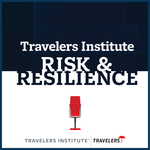
Tune in to “AI in Action: The Future of Risk Management Through Predict & Prevent®,” available on Apple Podcasts® and Spotify.
Learn more, explore the most recent episodes and subscribe to the Travelers Institute Risk and Resilience podcast.
Summary
What did we learn? Here are the top takeaways from AI in Action: The Future of Risk Management Through Predict & Prevent®:
New developments in technology allow for an evolved approach to risk management, Miller said. The traditional insurance model involves responding to a loss after a claim is filed, while a new approach called Predict & Prevent® uses technology to take proactive steps to prevent or mitigate the loss, allowing insurers to offer new and better services to policyholders, he explained. For example: A sensor can detect a spike in electricity flowing into a home and alert the homeowner, who can call an electrician to fix the problem, hopefully preventing a house fire. “From a policyholder point of view, you made their life better because they don’t have to go through all the steps of a loss,” he said.
The best loss is one that never happens, and the time is right to use technology to help prevent losses, Miller stressed. “Current technology is enabling the Predict & Prevent® approach, and there’s a financial need for it from both the customer’s and insurer’s point of view,” he said. The convergence of generative AI with two other technologies, Internet of Things (IoT), with billions of devices connected to the internet, and blockchain, with the capacity for secure storage of loads of data, paved the way for Predict & Prevent® to take off now, he explained. “A confluence of several factors makes this both technically possible and economically feasible at the same time,” he said.
There’s a strong business case for Predict & Prevent® in the risk management and insurance fields and AI can be applied in many areas of insurance, from underwriting and pricing to streamlining and personalizing the claim process, Miller said. In pre-loss mitigation, tools such as telematics and Advanced Driver Assistance Systems are already preventing losses, he added, sharing an example of when his vehicle detected a deer and applied the brakes. “This new approach to risk management could even help stabilize market spikes,” he said, adding that “proper use of Predict & Prevent® techniques can moderate both the frequency and the severity of claims.” For example, “if there is a broken pipe and your water sensor goes off in your basement, we didn’t avoid the loss, but we mitigated it because you shut off the valves,” he said.
Insurers can use AI to predict and prevent losses across the entire insurance value chain, Miller explained. For example, in cyber risk, AI can spot anomalies to detect threats early. In personal lines, many smart home devices can alert homeowners to issues before they become bigger problems. In commercial lines, wearable devices can record workers making movements that increase their risk of workplace injuries. In climate risk, carriers can model and prevent wildfires by selectively cutting trees or clearing brush. Many well-known organizations are adopting AI to reduce their risks. “The NFL is using sensors and AI to predict injury risk, and NASA is developing technologies to predict aircraft overheating and prevent in-flight failures,” he said.
Adopting AI in the risk management and insurance fields requires focus on compliance and standards, Miller stressed. “I believe we’re a very ethical industry and we want to do the right thing,” he said, “but AI is built on data, and if there’s bias in the data, there will be bias in the system,” he added. Data privacy and security also are key since the insurance industry depends heavily on personal data such as health records and driving behavior. Finally, an organization needs clear delineation of responsibilities for accountability. “You have to regularly audit AI systems and make sure they’re in compliance with legal and ethical standards,” he said.
Agents and brokers play a big role in the Predict & Prevent® approach to risk mitigation, Miller said. “You have to understand the customer need and then you have to be able to fashion a solution to meet that need. That’s what agents and brokers do every day,” he said. They must understand their customer’s business intimately to know which tools are most suitable for which situation, and being able to explain these new tools will make their relationships with customers closer, he stressed, adding: “Agents and brokers are crucial in this sort of paradigm shift.”
There are resources available to help you delve more deeply into Predict & Prevent®. One easy way to learn more about this topic is to listen to Miller’s podcast, “Predict & Prevent,” available on Apple Podcasts®, Spotify or wherever you listen to podcasts. On it, he discusses everything from the challenges of implementing AI tools in businesses to preventing wildfires to innovative AI solutions, such as IBM’s use of a robotic dog for data collection. The Institutes will also soon offer online courses on operational efficiency and driving innovation through the insurance value chain in areas like claims underwriting risk management, Miller said. They also have planned webinars and seminars on AI and Predict & Prevent®.
Speaker
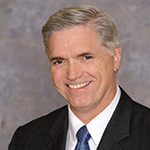
Peter Miller, MBA, CPCU
President and Chief Executive Officer, The Institutes
Host

Joan Woodward
President, Travelers Institute; Executive Vice President, Public Policy, Travelers
Presented by
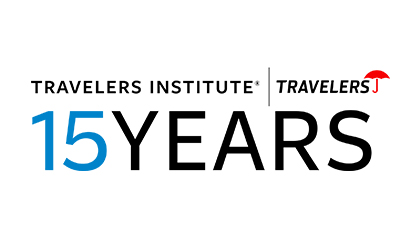
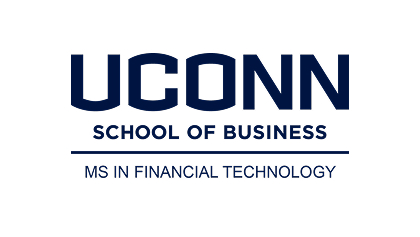
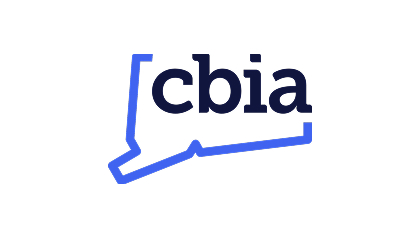
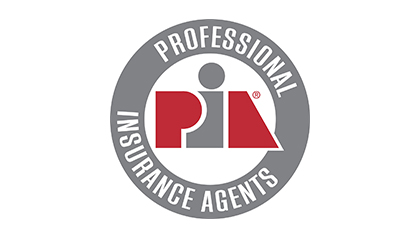
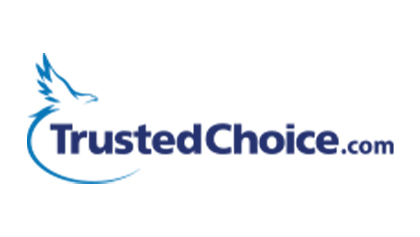
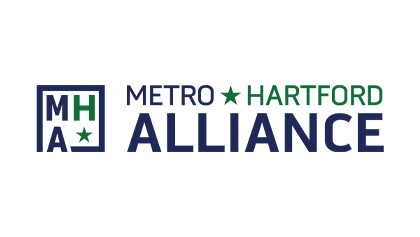
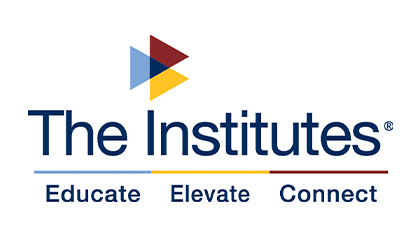
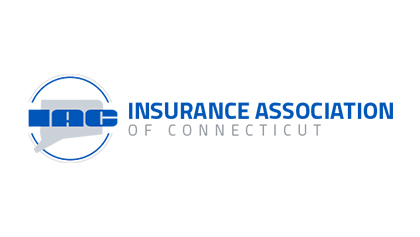
Related content
Guarding Against Insurance Fraud in the Digital Era
Discover how emerging technologies, like artificial intelligence, pose challenges and, simultaneously, offer solutions to combat evolving forms of insurance fraud.
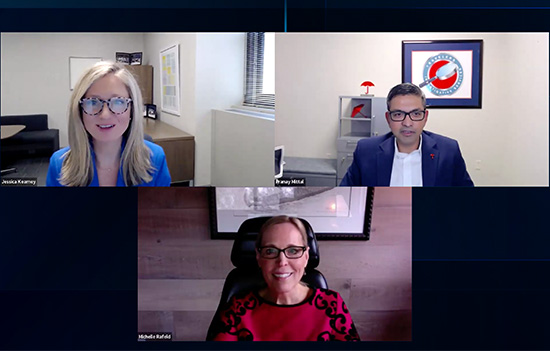
Insuring Innovation: Life Sciences and the P&C Insurance Industry
Learn more about how the property and casualty insurance industry helps facilitate groundbreaking medical innovations and advance public health initiatives.
